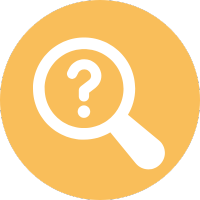Ego Eradicator
Soothe and Restore in Child’s or Baby Pose
Balasana, which is commonly known as Child’s Pose or Baby Pose in the Kundalini Yoga tradition, is an asana known for creating a sense of safety and its soothing, restorative effects. It is used during yoga sequences to help restore the energy and rejuvenate the body. As Karena Virgina and Dharm Khalsa mention in their book Essential Kundalini Yoga, “Relaxing in Baby Pose with the head lower than the heart creates a sense of wonder and lets the mind surrender to the wisdom of the fourth chakra”. This asana provides a moment of ease and helps ground the body and mind, creating safety in which we can be still and reminded that rest is equally important as action.

How to Practice Balasana:
Balasana involves kneeling on the floor, and folding over the thighs, with the forehead resting on the ground. This posture mimics the fetal position, promoting a sense of complete safety and comfort, like a newborn scrunched up on its mother’s chest.
- Base of the Posture: Start in Rock Pose (Vajrasana) by sitting on your heels with your knees together, firmly grounding your lower body.
- Core Strength: Engage your core slightly to support the movement as you prepare to fold forward.
- Spine Movement: Exhale and hinge at the hips, allowing your torso to lengthen and lower gently onto your thighs, keeping your back relaxed but extended.
- Limbs (Arms, Legs, and Head): Bring your forehead to rest lightly on the ground. Position your arms alongside your torso, palms facing upward, and allow them to relax naturally.
- Final Alignment: Ensure that your entire body feels centered and supported, with your hips resting on your heels and your shoulders relaxed.
- Breath and Participation: Close your eyes, take long, slow, deep breaths, and focus on releasing tension with each exhale, fostering a sense of calm and safety.
Checkpoints and Modifications:
- If you experience discomfort in your feet, ankles, knees, or hips, use cushions or folded blankets under your ankles, lower legs, or under your buttocks to provide more support and reduce strain.
- If your forehead doesn’t reach the ground, put a pile of pillows or other props underneath your forehead to bring the ground up to meet it. This will elevate the torso and reduce strain on your hips. This may also help relieve discomfort in the lower back.
- Separate the knees, if needed, to accommodate stomach and/or breasts. This is obligatory for pregnant women who wish to do Balasana (see below).
- If the thighs are tight and/or the posture causes pain in the knees, roll a small blanket, mat or towel into a tube and place it between the thighs and the calves, or between the heels and the buttocks, to alleviate the pressure. You may also rest your sit bones on a block, cushion, or folded blanket, placed between the lower legs, to take some pressure off of the knees.
- If you experience neck or shoulder pain in the posture, you may want to try Supported Child’s Pose or Salamba Balasana, as described in the Variations below.
Benefits of Balasana:
Balasana offers numerous physical and mental benefits:
- Stretches and Relieves Tension: Balasana (Baby or Child’s Pose) gently stretches the hips, thighs, and ankles while relieving tension in the back, shoulders, and neck.
- Cools, Soothes, and Relaxes: This posture is cooling and relaxes the nervous system, to support a calm, peaceful state of mind, and reduce stress and anxiety.
- Loosens Hips and Lower Back: Regular practice of Balasana supports hip and lumbar spine flexibility.
- Improves Digestion: The gentle compression of the abdomen supports digestion and relieves bloating.
- Perfect Counterpose to Back Bends: Balasana is a great counterpose to gently stretch the lower back after backbends, like Bow Pose (Dhanurasana) and Cobra Pose (Bhujangasana).
- Grounds and Centers: Balasana is an excellent posture for grounding and centering, making it ideal for rest during or after a yoga session.
- Opens the Heart: Balasana also activates the heart meridian, or energy pathway, gently opening you to giving and receiving love.
Variations of Balasana:
There are several variations of Baby/Child’s Pose to suit various needs and levels of flexibility:
- Extended Child’s Pose (sometimes referred to as Uttana Shishosana): Stretch your arms forward, palms facing down, to deepen the stretch of shoulders and upper back.
- Wide-Knee Child’s Pose (Prasarita Balasana): Spread your knees apart while keeping your big toes touching. This variation allows for a deeper stretch in the hips and can be more comfortable for people with tight lower backs.
- Supported Child’s Pose (Salamba Balasana): In this variation the torso is rested on two bolsters that are supported by blocks, in a way that creates a space underneath where the arms can cross. This is especially beneficial during restorative yoga sessions.
- Side Child’s Pose: Walk your hands to one side, stretching the other side of the body. Repeat on the opposite side for a balanced stretch.
Contraindications:
- Knee Injuries, Pain or Discomfort: Individuals with knee injuries or knee pain should avoid Balasana or modify the pose with appropriate support.
- Lumbar Spine Injuries, Pain or Discomfort: Individuals with lower back pain or injury, who cannot adopt the posture comfortably, can replace this pose with Corpse Pose (Savasana).
Balasana During Pregnancy:
Balasana is a relaxing and safe asana to practice while pregnant; it can gently stretch and relieve the lower back. However, you will need to modify the posture to accommodate your growing belly. Below are some modifications you can try during pregnancy:
- Place some pillows in front of you, to rest your forehead and upper body on, leaving a gap for your belly.
- Open your knees to a comfortable width to allow space for your belly.
Always consult with a healthcare provider before practicing yoga during pregnancy, especially if you have any concerns or complications.